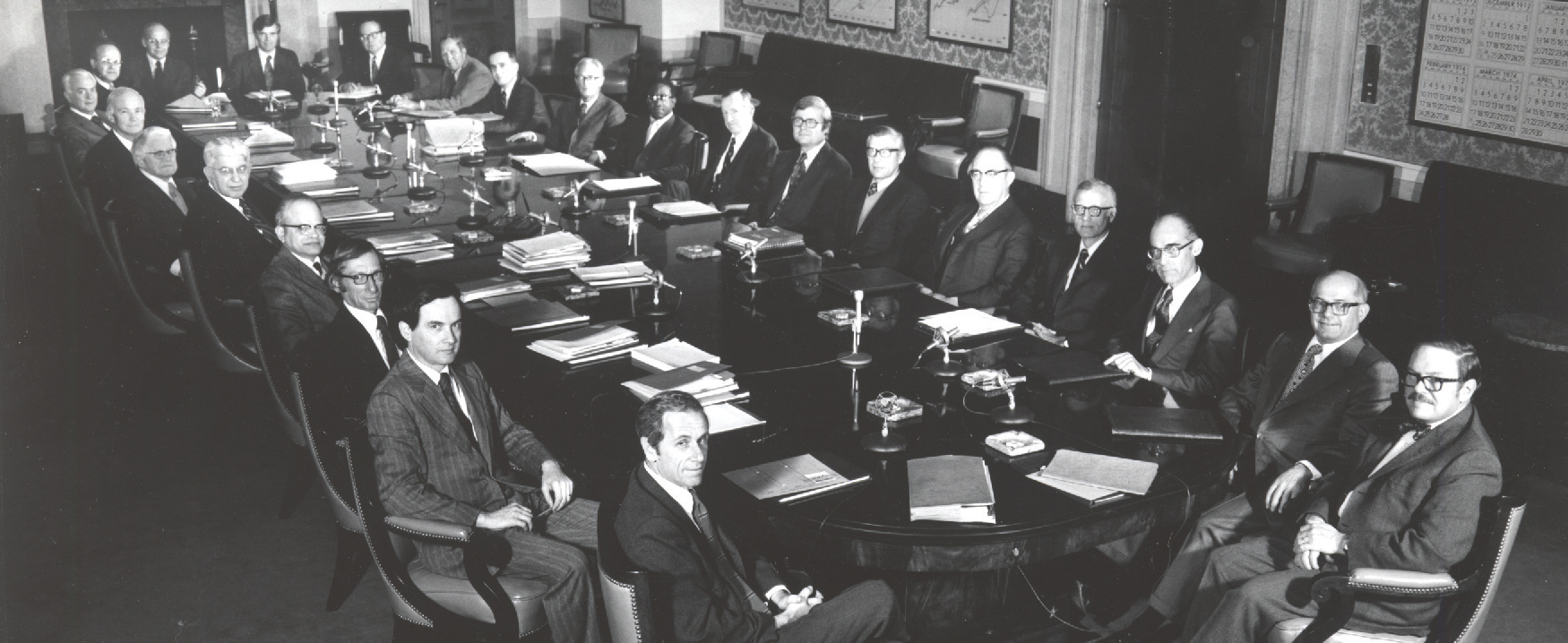Chapter 6 Introduction
Figure 6.1 Fifty years ago, corporate and regulatory boardrooms were almost exclusively male and White, as this meeting of the Federal Open Market Committee, an executive committee of the Federal Reserve banking system, demonstrates. How much has this changed today? (credit: modification of “FOMC meeting, 1970s” by Harris & Ewing/Wikimedia Commons, Public Domain)
Introduction
The 2020 Gender Diversity Index shows that many Fortune 1000 boards of directors still lack diversity.1 Women and minorities continue to be underrepresented at the chief executive officer (CEO) level too.2 Does this sameness merely look bad, or are there ethical and business reasons why top U.S. management should be more diverse (Figure 6.1)?
A demographic disconnect between leadership and workforce influences working conditions in many ways. For example, if more women held leadership roles, would workplace sexual harassment have come to light before the #MeToo movement? Would more companies offer paid family leave? If minorities were better represented at the executive level, would corporate lobbyists advocate differently for immigration and health care policies? When 70 percent of boardroom seats are occupied by White men,3 who make up only 30 percent of the population, many people’s views, ideas, and opinions will go unheard in decisions that affect their lives and livelihoods. We have seen progress, but much remains to be accomplished. Does management have an ethical duty to try to diversify top leadership? Whatever individual responses we might offer to each of these questions, a significant theme in this chapter is that ethical behavior in the workplace is most effectively instituted when it is modeled by senior leadership.
